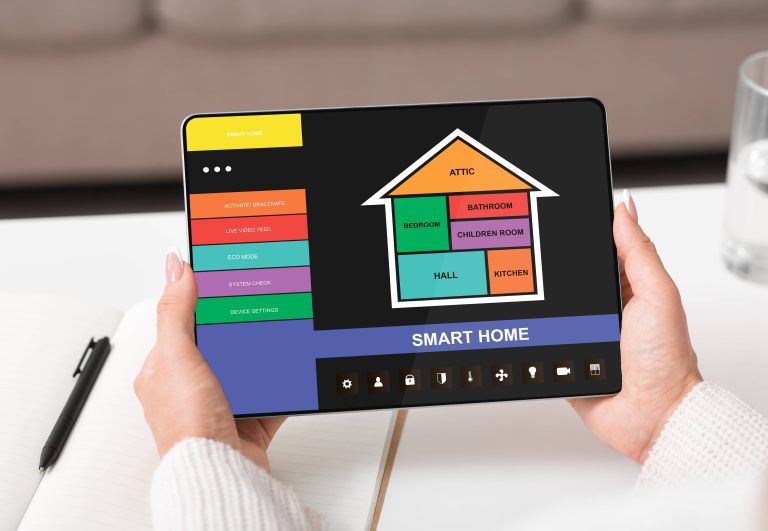
The advent of smart home technology has revolutionized the way we handle everyday tasks, and smart locks are a prime example of this. These innovative devices offer unparalleled convenience by allowing us to control access to our homes with a simple tap on our smartphones. However, as with any technology, smart locks are not infallible. There may be times when your smart lock fails, leaving you potentially locked out and vulnerable. In this blog post, we will explore essential backup plans that every smart home owner should consider to ensure security and peace of mind in the event of a smart lock failure.
Understanding Smart Lock Failures
Before diving into the backup plans, it’s important to understand the common reasons why a smart lock might fail. Some of the most prevalent issues include:
1. Battery Drainage: Like any electronic device, smart locks run on batteries that can deplete over time. If the battery level gets too low, the lock may become unresponsive.
2. Connectivity Issues: Smart locks rely on Bluetooth, Wi-Fi, or other wireless protocols to communicate with your smartphone or hub. If there’s any disruption in connectivity, the lock may fail to operate.
3. Software Glitches: Firmware updates or bugs in the smart lock’s software can occasionally cause malfunctions.
4. Physical Damage: As with traditional locks, smart locks can suffer from physical wear and tear, potentially leading to mechanical failures.
5. Hack Attempts: While rare, there’s always a small risk of cybersecurity breaches that could compromise the functionality of your smart lock.
Backup Plan 1: Keep a Physical Key
Even in this digital age, having a physical key as a backup is a sensible precaution. Many smart locks come with the option of using a traditional key as a fail-safe mechanism. Ensure you:
– Keep the physical key in a secure location, but one that is easily accessible if needed.
– Consider giving a spare key to a trusted friend, neighbor, or family member who can assist you in case of an emergency.
Backup Plan 2: Use an External Power Source
For smart locks powered by batteries, an external power source could be a lifesaver. Many smart locks have terminals that allow you to connect an external battery pack. Here’s how to prepare:
– Purchase a dedicated battery pack specifically designed for your smart lock model.
– Store the battery pack in a safe place near your entrance for quick access.
– Regularly check the battery pack to ensure it is charged and functional.
Backup Plan 3: Install a Backup Keypad
An auxiliary keypad can serve as an effective backup if your smart lock fails to respond to your smartphone commands. Here’s how to implement this:
– Choose a compatible keypad that can be integrated with your smart lock system.
– Install the keypad near your door for easy access.
– Ensure that you and all household members memorize the access code and change it periodically for security reasons.
Backup Plan 4: Utilize a Biometric Scanner
Biometric scanners, such as fingerprint readers, offer an additional layer of convenience and security. Here’s what you need to know:
– Opt for a smart lock model that includes a built-in biometric scanner.
– Register the fingerprints of all family members who need access.
– Regularly clean and maintain the fingerprint sensor to ensure it remains functional.
Backup Plan 5: Smart Home Ecosystem Integration
Integrate your smart lock with other components of your smart home ecosystem for enhanced reliability. Here’s how:
– Link your smart lock with your smart home hub (e.g., Amazon Echo, Google Home, or Apple HomeKit) for centralized control.
– Set up automation scripts that trigger alternative actions if the lock fails, such as notifying you via your smart home security camera.
– Ensure your smart home ecosystem software is always up-to-date to avoid glitches.
Backup Plan 6: Emergency Locksmith Services
Sometimes, your backup plans might not work as expected, and professional help could be needed. Knowing how to quickly contact a reliable locksmith is essential:
– Research and identify reputable local locksmith services in advance.
– Keep their contact information saved on your smartphone and written down in an accessible location.
– Ensure that the locksmith is familiar with smart lock systems.
Backup Plan 7: Regular Maintenance and Updates
Prevention is better than cure. Regular maintenance and updates can help prevent smart lock failures:
– Periodically check the battery status and replace batteries as needed.
– Update the firmware of your smart lock to ensure it has the latest bug fixes and features.
– Inspect the physical condition of the lock and its components to detect any wear and tear early.
Conclusion
Smart lock failures can be inconvenient and potentially troublesome, but with the right backup plans in place, you can mitigate the risks and ensure your home remains secure. By keeping a physical key handy, using external power sources, installing backup keypads and biometric scanners, integrating with smart home ecosystems, having access to emergency locksmith services, and performing regular maintenance, you can navigate through any smart lock challenges that come your way.
Remember, the ingenuity of smart home technology lies in its ability to blend convenience with security, but it’s always wise to have a safety net in place. Taking these proactive steps will ensure that your smart home continues to be a haven of innovation and safety, even in the face of unexpected tech hiccups. Happy smart living!







